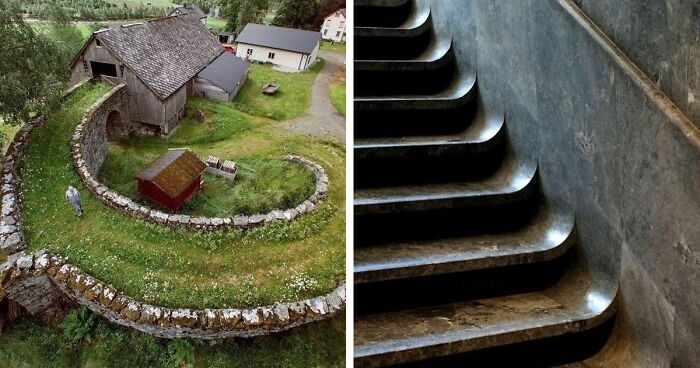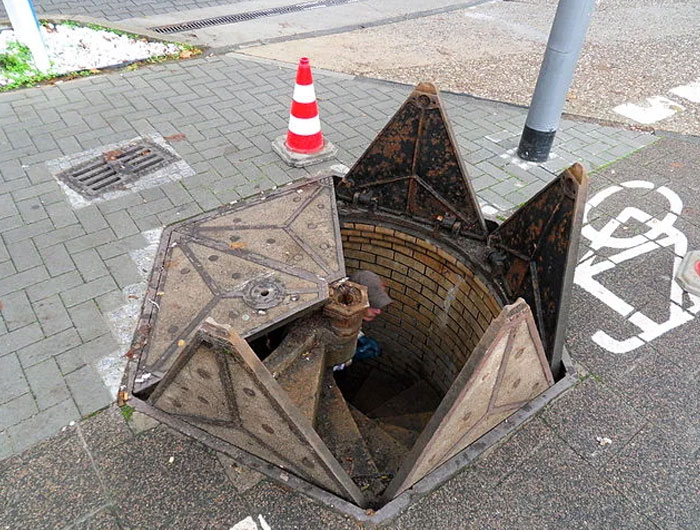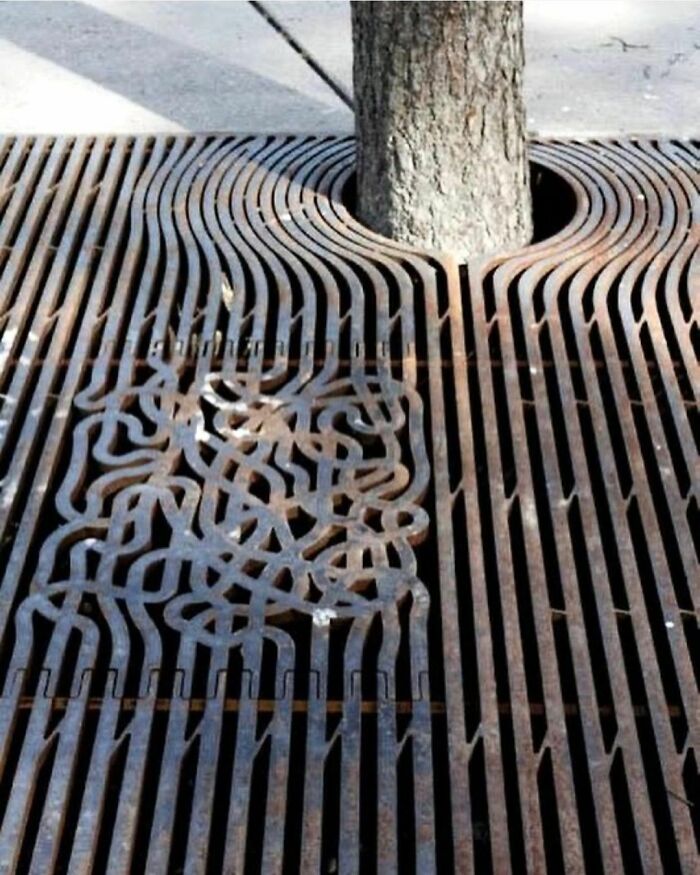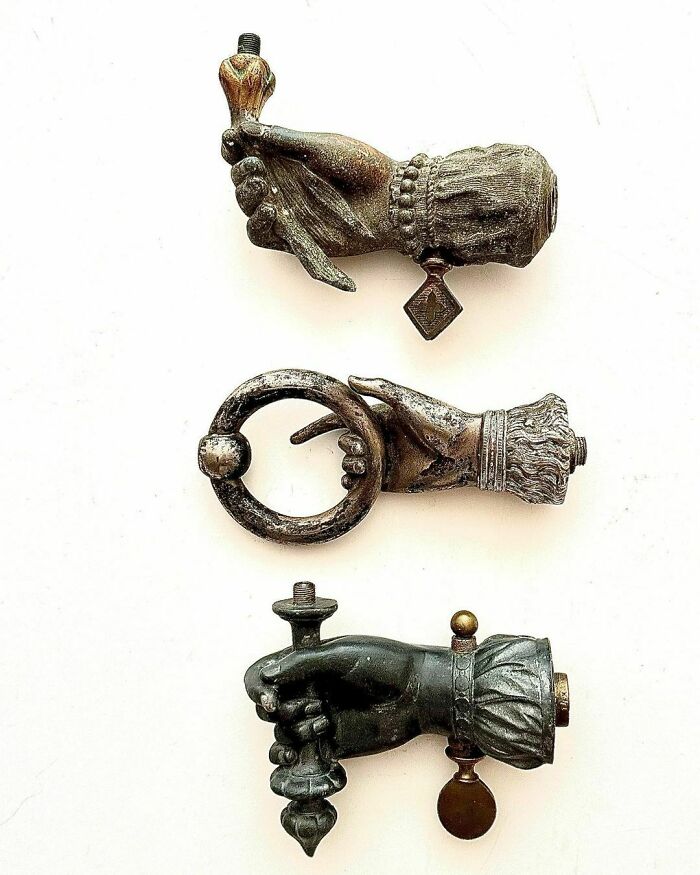
30 Intentional And Accidental Pieces Of Art That People Have Found All Over The World (New Pics)
If you’ve ever taken a stroll through an antique shop, you know that they’re full of unexpected treasures. You might find a charming phone from 50 years ago or a poster that your mother might have hung up in her childhood bedroom.
And one Instagram account that’s passionate about antique items and unexpected pieces of artwork we might stumble upon in our daily lives is Lost Found Art. We’ve gathered some of their most captivating photos of impressive artwork and designs from around the world, so you pandas can take a virtual trip through their gallery below. Enjoy scrolling through, and be sure to upvote the pics that you’re glad someone found!
This post may include affiliate links.
Way to build a ramp to get to the top of your barn. Stone ramp. Valldal, Norway.
Medieval humor. Abbey of Saint Foy. Conques, France. C. 1050.
Apparently those medieval stone masons had an amazing sense of humour.
Snake bridge on Macclesfield canal on Atsbury. England.
This kind of bridge is meant to change the tow path on the canal from the left side to the right without having to unhook the horse pulling the barge - the horse just walks over.
As you can see from the photos on this list, the Lost Found Art Instagram page is full of exciting images and fun facts about people, places and history. Did you know that homemade Halloween costumes for children back in the day were often much scarier than the looks we see today? Have you ever seen an antique prosthetic hand?
This page shares plenty of fascinating curiosities that have been lost in history or simply aren’t talked about as often as they should be. But the unique nature of the account has gained them plenty of followers, over 90k to be exact, since they started posting in 2015. Now, they’ve shared over 5,000 images, and fans can’t seem to get enough.
The amazing custom glass shades that appear to be melting by @kumbhglass
There are elevators and then there are elevators. This magnificent Art Nouveu steam powered elevator in the house of Guard Captain S. Muyaki in St. Petersburg, Russia. Circa 1902-1903.
This is the way to rake those fall leaves. Created by land artist Nikola Faller from Osijek Croatia. Photos taken by him as well.
But despite how captivating their Instagram presence is, Lost Found Art is much more than just a social media page. In fact, it’s actually a “unique design company that specializes in sculptural installations and assemblages using antique and vintage pieces,” their website explains.
“Our works are created with an eye to scale, balance, color and surface interest, and the end result is a strong visual statement that combines artistic statement, whimsy, form and uniqueness,” Lost Found Art notes.
Now this is one cool manhole cover! Complete with a spiral staircase to sneak up on your enemy! You would think this would have been in a medieval castle or Hogwarts. Weisebaden, Germany
A small grotesque biting a large gargoyle drain spout. On the roof of the Salisbury cathedral UK. A bad attempt at a hickey?
“We can customize to fit any space, décor, or point of view. Subtle or outrageous, free standing or wall mounted, our collections become the focal point of any room in your home or business,” Lost Found Art continues on their site.
“Our designs work equally well in a contemporary setting as they do in the more traditional. Lost Found Art also offers in-house consulting in the New York, New Jersey and Connecticut areas, providing an expert eye to residential owners and businesses in order to maximize the display potential of existing personal collections.”
Stairway to heaven. Chantilly Castle. France. Wrought iron railing made in 1870 by the Moreau brothers on a drawing by Honore Daumier.
Water current directing drain in a steep slope in Taiwan. Almost like intentional street sculpture.
Ancient wooden Orthodox Church. Built in 1655.
I like this church. The wood, the size, it just works.
Lost Found Art even has various collections on their website that visitors can peruse. You can find antique paint brushes, palettes, baseball mitts, decorative birds, rolling pins, cutting boards, garden shovels, mirrors, bowling pins, baking pans, cheese graters, knives, buckets, bottles and more. The collections are excellently curated blasts from the past, and they fabulously turn regular old items into pieces of art.
Amazing bronze octopus door pulls on an Art Deco Home circa 1925 by architect Emile De Nil. Nothing wears it age as well as bronze. Gand, Belguim.
The beautiful carved marble steps leading down to the gallery at the Hotel National des Arts et Metiers in Paris.
Great window design. Spaarndammerbuurt, Amsterdam.
I wouldn't want to be the guy who has to wash those windows on the outside.
There are even individual objects on sale on Lost Found Art that would be sure to add some quirky charm to your home. The vintage prosthetic hand is one of them, along with an antique Art Deco circa 1920’s wooden store mannequin display. You can also purchase a 1950’s antique pinball game playing field or a “funky little futuristic 1950’s egg beater.”
Amazing iron work inserted into a more traditional pattern. You can see where the cutout was made to drop in the abstract pattern. Located outside Mortensrud church Oslo.
Incredible staircase made by Bernardo Bountalenti 1574. Seen at the Church of Santo Stefano at Ponte in Florence.
While the items featured and sold through Lost Found are often much older than the company, that has been around for a while as well. In 2006, Mark Indursky, one of the owners of Lost Found Art spoke to the New York Times about how he turns vintage items into sculptures. At the time, Indursky was selling a collection of vintage baseball mitts, about which he said, “I like the scale and the innocence.” But he’s particular about what items he’ll take on, as he told the New York Times, “I don’t do cookie jars.”
Dunmore Pineapple House. Built in 1791 in Stirlingshire Scotland by Earl John Murray for his wife Charolette. Attributed to architect Sir Williams Chambers. It is considered one of the most bizarre buildings in the country. Pineapples were first brought to Europe by Christopher Columbus from the Caribbean island of Guadalupe in 1493. Pineapples became a rare delicacy in Europe with associations of power, wealth and hospitality. The pineapple structure on this building is 46 ft high and constitutes a stunning example of the stonemason’s craft, being a remarkable depiction of the fruit. The pineapple became a universal symbol of welcome and hospitality.
Miniature chess set built into a ring. Just don’t sneeze when playing. Ring by Joe Turner 2015.
Late 19th century now multi tool. The predecessor to todays Leatherman tool. These can be found with as few as 3 blades and as many as 12. This one sold on eBay about two years ago.
It’s fascinating to consider that in another 50 or 100 years, Lost Found Art might be featuring items that we use and consider modern today. But for now, I’ll enjoy scrolling through this virtual museum that allows me to feel a sense of nostalgia for times I never even got to experience. And if I ever get a chance to purchase something from Lost Found, I think my apartment could benefit from having a pair of antique metal-banded wooden brick molds!
Grasshoppers Dream Cafe. Jeongseon South Korea. Constructed of two converted train cars, the upper level serves pasta while the lower level houses a coffee shop.
“The Bulge” Amsterdam School. Michael de Klerk. 1921.
Three 19th century decorative hand shaped gas light lamp ends. Personal collection NFS. Featured in my upcoming book “Out Of Hand”
We hope you’re enjoying viewing all of these pieces of artwork, pandas, whether they belong in a gallery or they simply make someone’s commute to work slightly more attractive. Keep upvoting all of your favorite pics, and then let us know in the comments if you’ve ever found some lost art like this out in the world. Then, if you’re interested in viewing even more photos from Lost Found Art, you can find Bored Panda’s previous article featuring the account right here!
Staircase designed by Eliel Saarinen for the Cranbook Art Museum in Michigan. Amazing hand rail design.
Magnificent 15th century iron coiled snake decoration attached to stone pillars in a square in Siena Italy today. Each one about 18” tall. Maybe 100-150 pounds. As usual my wife rolled her eyes as I gave them a gentle kick to see if by possible chance one might come loose. Though in the open and directly in front of the police it might not have gone well. And I probable would not have gotten out of jail in time for dinner.
Takasugi-an tea bourse in Nagano Japan by Terunobu Fujimori 2003.
Concrete bench. Part of the Santuario dell’Amore Misericordioso complex by architect Julio Lafuntuente. Todi Italy.
Very popular with women in the 15th thru the 17th century were these hollowed out wooden platform shoes called “chopines” Designed to protect dresses from the mud and street dust. They were very popular in Venice and were worn by noblewomen and courtesans. These were also worn to flaunt the wealth of their husbands or fathers. The shoes were tied with leather is silk straps. No running for a cab in these.
One of my favorite pieces in my hand collection is this larger than life size 19th century cast iron hand and chain. Not sure what it’s end use was. It appears to have been part of an advertising/trade sign piece. Thumb can be removed. With the chain it’s a very, very heavy piece.
i didnt see most of them before. And THIS are why we come to Bored Panda!
What is perhaps quite sad is that for any of these to be made today they would need to be designed/programmed into a computer and then cut out of the material by automated machines, remember seeing a documentary that said there is Roman ‘concrete’ made 2,000 odd years ago to create a sea port that is stronger, harder and lasts longer than anything similar material we can make today, how as a species have we managed to forget how to do things ‘right’ in favour of doing things quick?
Executive profits have trumped quality and safety since the industrial revolution started.
Load More Replies...i didnt see most of them before. And THIS are why we come to Bored Panda!
What is perhaps quite sad is that for any of these to be made today they would need to be designed/programmed into a computer and then cut out of the material by automated machines, remember seeing a documentary that said there is Roman ‘concrete’ made 2,000 odd years ago to create a sea port that is stronger, harder and lasts longer than anything similar material we can make today, how as a species have we managed to forget how to do things ‘right’ in favour of doing things quick?
Executive profits have trumped quality and safety since the industrial revolution started.
Load More Replies...
 Dark Mode
Dark Mode 

 No fees, cancel anytime
No fees, cancel anytime 












































































































